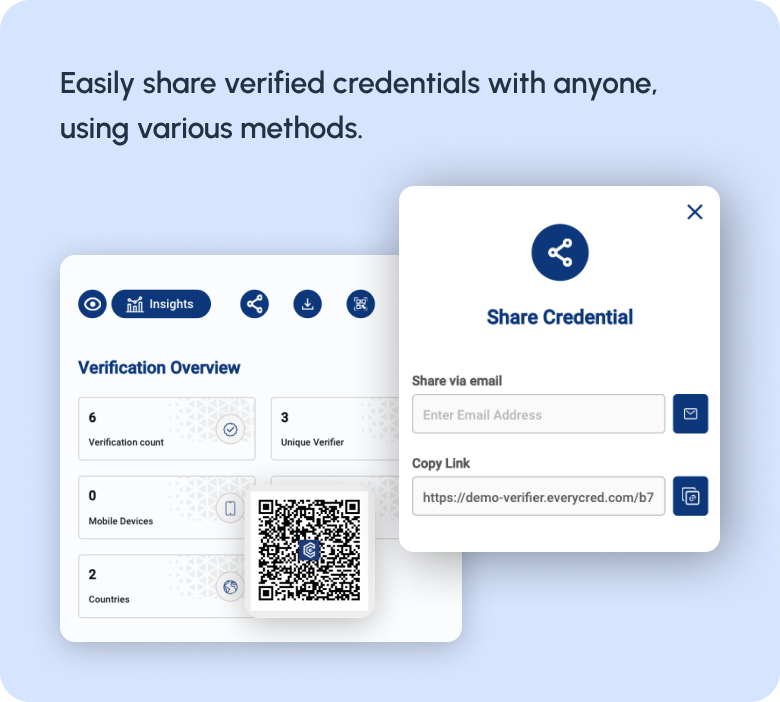Contact Sales
Not sure where to start? Contact our sales team and we'll help you find the best solution for your needs.
better-wp-security domain was triggered too early. This is usually an indicator for some code in the plugin or theme running too early. Translations should be loaded at the init action or later. Please see Debugging in WordPress for more information. (This message was added in version 6.7.0.) in /var/www/stg-everycred.com/wp-includes/functions.php on line 6114Implement Merkle proof security in credentials
Enable off-chain verification with proof validation
Include Issuer, Subject, and Holder DIDs in credentials
Set expiration dates for credentials
Retain your credential file securely
Protect data integrity from tampering and fraud
Generate W3C compliant Verifiable Credentials
